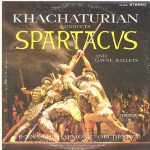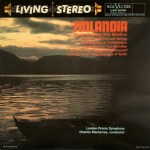
More of the Music of Sergio Mendes and Brasil ’66
Reviews and Commentaries for the Music of Sergio Mendes and Brasil ’66
We were very impressed with the Speakers Corner pressing of this album when it came out on Heavy Vinyl in 2001. We simply could not find a vintage pressing that could beat it. I actually took it over to a good customer’s house so that he could hear how much better the album sounded on Heavy Vinyl when played head to head with whatever vintage pressing he might have had in his collection.
I’m sure you can see where this is going. I could not have been more wrong.
His copy smoked mine right from the get-go. I wiped the egg off my face, wrote down the stamper numbers for his copy, and proceeded to get hold of some good early pressings so that I could find a copy that sounded the way his did — which was awesome, the best it had ever sounded, even on a system (Infinity speakers, Audio Research electronics) that I had never much cared for. (His system is set up in a basement with a low ceiling, a problem that cannot be solved with good equipment, room treatements or anything else for that matter.)
Eventually — eventually in this case being at least five years and maybe more — we felt we had this album’s number and knew which pressings tended to have the goods and which ones didn’t. All that was left was to do was to clean up the stock we had and do the shootout so that we could actually be sure, or sure enough, keeping in mind that all knowledge about records is provisional.
This would have been about 2010, and we would learn a lot, but we would keep learning more about the album with every subsequent shootouts, close to ten by now I should think.
Live and Learn
These kinds of Heavy Vinyl pressings used to sound good on older systems, and I should know, I had an old school stereo even into the 90s.
Some of the records that sounded good to me back in the day don’t sound too good to me anymore.
The Speakers Corner pressing is decent, not bad, but by no stretch of the imagination would it ever be able to compete with any Hot Stamper pressing you might see on our site.
Problem Solved?
Most pressings of this album are grainy, shrill, thin, veiled, smeary and full of compressor distortion in the louder parts. This is hardly a recipe for audiophile listening pleasure.
The Speakers Corner pressing is not grainy, shrill, thin or distorted, but it is veiled, smeary and compressed, and all you need to do to recognize its shortcomings is compare it to a properly-mastered, properly-pressed, properly-cleaned early pressing.
They may be rare, but there are good sounding pressings. You just have to work to find them.
Audiophile Sound to Die For
As you may have noticed, we here at Better Records are HUGE Sergio Mendes fans. Nowhere else in the world of music can you find the wonderfully diverse thrills that this group offers. We go CRAZY for the breathy multi-tracked female vocals and their layers of harmonies, the brilliant percussion, and, let us never forget, the critically important piano work and arrangements of Sergio himself.
Brasil ’66, Equinox and Stillness are ALL Desert Island Discs for us, but we enjoy the hell out of their other albums as well. This stuff never sounds dated to us. We love the albums of Antonio Carlos Jobim, Joao and Astrud Gilberto from the period, albums which no doubt served as templates for the style Sergio wanted to create with his new ensemble, but Brazil 66 is clearly a step up in every way: songwriting, arranging, production, and quality of musicianship.
For audiophiles it just doesn’t get any better. Almost. Stillness is still the Ultimate, on the level of a Dark Side of the Moon or Tea for the Tillerman, but the first album and Equinox and specific tracks on their other albums are not far behind.
(more…)
 More of the music of Jean Sibelius (1865-1957)
More of the music of Jean Sibelius (1865-1957)








 More of the Music of David Bowie
More of the Music of David Bowie
 More of the music of Jean Sibelius (1865-1957)
More of the music of Jean Sibelius (1865-1957)